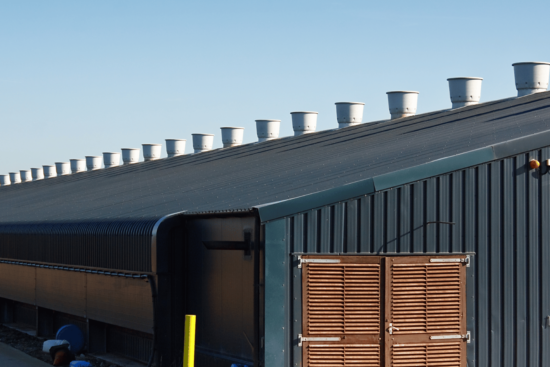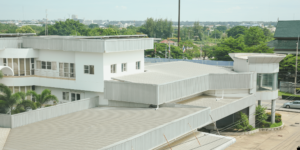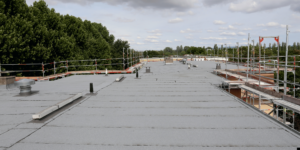© All Rights Reserved | Roof Replacement and Repair - Zaman Roofing LLC. | Website Design & CT SEO Powered by High Point SEO CT
- Google Rating5.0Based on 33 reviewsZaman Roofing - CT Roofing Contractors & Roof Repair5.0Sergey Y."Zaman Roofing” recently completed a roof replacement project in our condo complex, and we are extremely satisfied with their service. From start to finish, their team demonstrated professionalism, efficiency, and exceptional craftsmanship. They were prompt in their communication, providing detailed explanations and answering all our questions. The crew arrived on time, worked diligently, and completed the project within the estimated timeframe.Not only did Zaman Roofing exhibit outstanding technical skills, but they also ensured minimal disruption to our daily activities. They took great care to protect our property, cleaning up thoroughly each day and leaving no trace of debris behind.The quality of the new roof is outstanding. Zaman Roofing used top-grade materials and paid attention to every detail, resulting in a sturdy and visually appealing finished product. The roof has significantly enhanced the overall appearance of our condo complex.We would highly recommend Zaman Roofing to anyone in need of roofing services. Their professionalism, expertise, and attention to customer satisfaction make them a reliable choice for roof replacements. We are grateful for their excellent work and would not hesitate to hire them again in the future.Christopher Z.Zaman Roofing was AWESOME!!!! This is my third time doing a roof in CT on my third home and Zaman did an outstanding job on my rather unique roof line. They even replaced a skylight. I needed a Roof Contract in place before insurance would allow the purchase because the seller was a DeeBag. Zaman worked with my realtor, banker, etc and even waited patiently while the seller delayed the process by 4 months. The week I closed, Zaman Roofing was up and at em. Stripping, prepping and replacing. In and Out. Property was nice and clean after the work was complete. I would highly recommend.Steve TZaman Roofing, located in Berlin, CT, truly excels in providing top-notch roofing services. I am absolutely thrilled to give them a well-deserved 5-star review for their outstanding work. They have proven themselves as experts in roofing Berlin CT, and I couldn't be happier with the results.When it comes to roofing in Berlin, Zaman Roofing stands out from the competition. Their team of skilled professionals demonstrated exceptional attention to detail during the installation of my new roof. They meticulously handled every aspect of the project, ensuring both aesthetics and durability were top-notch.What impressed me the most was Zaman Roofing's commitment to customer satisfaction. From my initial contact with them, they were responsive, courteous, and eager to understand my specific roofing needs in Berlin. Their exceptional customer service throughout the entire process made me feel valued as a client.Zaman Roofing's expertise in roofing Berlin is truly commendable. They have an extensive portfolio of successful projects throughout Berlin, CT, showcasing their skill and knowledge in a variety of roofing styles and materials. Regardless of the complexity of the job, they have the necessary resources to deliver exceptional results.I cannot emphasize enough how satisfied I am with Zaman Roofing's services in Berlin, CT. Their professionalism, reliability, and dedication to their craft are unparalleled. If you're searching for exceptional roofing services in Berlin CT, Zaman Roofing is the company to choose. They will exceed your expectations in every way.In conclusion, Zaman Roofing unquestionably deserves a stellar 5-star rating for their exemplary roofing services in Berlin, CT. Their expertise in roofing Berlin and roofing Berlin CT shines through in their exceptional workmanship and customer service. I highly recommend Zaman Roofing for all your roofing needs.Gary G.Zaman replaced the roof on my 2,200 sq. ft. colonial in 2015. The workmanship was perfect. Unfortunately, over time, the top-of-the line shingles discolored. He was totally supportive in getting the manufacturer to replace them at no cost to me. He just replaced the roof with the new shingles. It was another perfect job. It was completed in one day. The crew was great and they cleaned the area spotless.Chris DWe used Zaman Roofing for our Roof and Gutter Replacement, I acquired 5 quotes for the work and found Zaman to be the most reasonable, it was a Good Decision to choose Zaman Roofing, Seweryn was Professional in every aspect and the Clean-up was nothing short of Amazing, I would Highly Recommend using Zaman RoofingRobert D.Excellent Service and Value - great crew and easy to deal with - highly recommended !Sunghoon P.Great work and reasonable price. I am so happy with their service. I asked a bunch of questions before and after the service and his responses were very prompt and straight to the point. Highly recommend.Adrienne M.I am so pleased that I used this company. My new roof looks fantastic. Such a hard working crew. Seweryn was informative and professional. Price was very completive. Don't hesitate to use them you will be very satisfied. Highly recommend!Nancy M.Good communication, timely response and knowledgeable. Very happy with our experience and highly recommend this company.Beata M.We used Zaman for our roof replacement recently and are very pleased. They replaced our roof in one day and gave us a very competitive quote. Good quality of work. Highly recommended.Lori K.They were here when they said they would. Professional & left everything neat ,cleaned up everything. They were in & out in a day & a half. Would recommend Zaman roifing.Dan R.A+ service, professional and quick response time.Anna G.Zaman and his crew provide great workmanship they installed new roofs they take great pride in the work they do. They were punctual and did a amazing job with the roof installation and clean up. Highly recommend Zaman Roofing to family and friends. Thank you for the opportunity to work with such a amazing contractorScott M.Awesome contractor, I would highly recommend him to family & friends. Seweryn & his crew were here on time & worked diligently. They were the happiest workers I've ever dealt with (I am a former construction project manager with the Federal government). Any & all questions were answered. My neighbors couldn't believe they finished the job in one day & complimented how great the new roof looks.Clement D.Great roofing contractors. I love to recommend it to my friends and family.Karen 9.With the quality, price, timeliness, all round nice guy and great crew, Zaman Roofing LLC is what other companies aspire to be.... Clean, helpful and a pleasure to recommend....james C.Excellent experience from start to finish, all appointments and work times met in a timely fashion, workmanship and clean up left nothing to be desired.Would be a definite recommendation, very pleased.Margaret B.I had obtained multiple quotes and did my due diligence research and Seweryn Zaman came back with fair price and good recommendations. He was professional, explained everything that he was going to do and never once he rushed me during decision process. He showed up on time with his hard working crew and finished my roof in one day. I was amazed with his crew who worked like busy bees. Very impressed with the clean up process and the end product. Two months after he finished my roof he was still helping me deal with the insurance company making sure I had everything I needed. Thank you SewerynSteve B.Very professional and easy to work. The crew came in, replaced my roof and then cleaned up everything! Highly recommended.Jim O.Competitive quote among four others. Seweryn Zaman provided larger color samples of the shingle colors we were interested in. He obtained the building permit, showed up on the day expected with his entire crew. Our older roof was on 24" trusses and needed more plywood replaced than anticipated. He got the additional sheets replaced on the day of the re-roofing. The crew worked with him late until the job was done and picked up every piece of old debris. The roof passed final town inspection with no concerns. Zaman Roofing is easy to deal with; he's responsive on text messages and phone calls. I used them in the past for an emergency repair and he found a well-hidden leak from the builder.Dale C.The crews did a good job, and the leader of the crew did a great job when they replaced the roof of my house in Farming on 7/6&7 this year. When they worked on the project, they worked professionally and in detail. We are very pleased with the work they have done, and highly recommend people to have the company worked on their roof projects.Forrest B.Zaman's was very professional, excellent quality of work and very responsive to our needs. This roofing experience was excellent from start to finish and provided an excellent value. Would certainly recommend them to any friend.Yonatan M.We used Zaman Roofing to replace our roof in 2019 and could not be happier with the service and product. A highly professional company and great personal interaction with the owner. The workers took great care of our landscaping, and the owner was there frequently to supervise the work and take care of finishing touches like flashing the chimney. We have had zero issues since then and highly recommend this company.Quinn V.Zaman was awesome. He was communicative, on-time, and was able to give me a quick inspection of our roof despite the rain. I rarely have a contractor tell me that I didn't need to spend any money, but Zaman told me my roof was fine for the next several years.magdalena K.We recently used Zaman Roofing to replace our 26-year-old roof. Right from the start they were great! Sevy was extremely professional and knowledgeable and gave us a great quote. Everything was done as they described and the final project looked great. The owner was on the job from start to finish as he promised.Ariadna G.Our experience with Zaman Roofing was excellent. I was very impressed with both their work and their customer service. Seweryn was very knowledgeable and professional.Larry G.What a wonderful business. Very responsive. They showed up exactly when expected, completed the project quickly and accurately and left no trace after clean up. All with a very competitive price. I would highly recommend Zaman to anyone looking to have roofing work done.STEVE R.I was very pleased with the roof and gutter repairs performed by Zaman Roofing on two of my buildings. Good workmanship and fair prices, I would recommend and use again.Danielle D.These guys stripped and reshuffled my roof is 1 day! They did an awesome job. Roof is beautiful. He uses a dump trailer which is great and they cleaned up well. Very happy with the work. Also pricing was fair.

Typical Issues with Commercial Roofs
Category: Roof Repairs • July 18, 2024
In commercial buildings, roofs are exposed to various types of uses and are subjected to multiple forms of stress. Incidences range from weather challenges to foot traffic and equipment. Therefore, issues regarding commercial roofs are frequent occurrences. Understanding the most common types of commercial roofing issues is crucial when it is time for inspections, maintenance, or repair. This ensures that the roof is well maintained and thus, serves the people for as long as possible.
What Constitutes a Commercial Roof
To introduce a discussion on the typical commercial roofing problems, it is essential to state what is meant by “commercial roofs.” Commercial roofs are on non-residential structures, which means they are found on buildings used for business purposes. These can range from commercial businesses such as shops and stores to accommodation facilities like hotels and motels, to health facilities, learning institutions, storage and manufacturing companies, among others. It depends on the size and the slant of the building, the material that is used in construction, the intended use of the building, and the climate conditions of the area.
These factors lead to wear and tear in the following ways:
Weather Damage
– Fluctuation in temperature expands and contracts substances and, in the process, uses up the material’s life span. This is made worse by moisture entering and corroding the roof deck, which is the part of the roof that is immediately under the roofing material.
– Rain, hail, wind, and storms cause either denting, tearing, or rupturing the roofing to the point where it may blow off. This leads to leakage if not rectified as soon as it is noticed.
– Freeze-thaw cycles and ice damming are common problems in northern climates where ice and snow load the roof.
Foot Traffic Damage
– Maintenance crews who patrol the roof daily or weekly tread on the roof and wear down the material through abrasion.
– Equipment used to transport loads of equipment for HVAC work or other servicing chores ends up pressing on the insulation and the membrane.
Equipment Issues
– Faulty ventilating, heating, and air conditioning systems cause membrane deterioration and drip water into the insulating material.
– Excessive use or operations with sharp objects may tear the roofing membrane or push it against the sharp edges of other equipment.
Proper material selection, regular maintenance, and timely repair should be expected to get at least 20-30 years out of your commercial roof. It is essential to be familiar with the challenges that owners encounter in order to avoid falling victim to severe complications.
Here are the common causes of roof leaks in commercial buildings:
One of the most pressing issues that most commercial buildings face with their roofs is leaks. If not corrected immediately, any leaks may cause damage that could amount to thousands of dollars.
The most common causes of commercial roof leaks include:
– Injuries caused by cuts, stabs, or pinches from falling objects, tools that accidentally fall onto the surface, or people walking on the material
– Cracks, gaps, separations, or any other issues with the system in areas like the vents, equipment, skylights, etc.
– Water stagnation, which is true with poor drainage systems such as standing water and ponding
– Water backed up by blocked drains or gutters
– Crisis conditions involving the membrane, such as cracking, blistering, or collapsing
– Damage to areas around equipment found on the roofs, such as AC units
Sometimes, one cannot be very sure of the source of water, especially if it leaks in odd places. It is recommended that an annual inspection be conducted, preferably after the winter season and when the rainfall is high, as it will be possible to find out which areas are weak and where water leaks before an emergency occurs.
Frequent Leaks and Repairs
If leaks are recurrent and only being patched to repair them, it is time to replace the roof when it is no longer trustworthy enough to provide reliable shelter.
Warping, cracking, and peeling materials are subtypes of deterioration that appear as distortions and breaks in a material’s surface or structure.
Thus, failure is shown by curled shingles, peeled coating, cracked membrane, and spongy and soggy insulation. Hence, when water finds its way under the top levels, issues are aggravated, as demonstrated above.
Excessive Ponding
Note that when rooftops take over 48 hours to drain after it rains, this is a sign of poor drainage. Drains can be blocked because the roof surface may have settled, or some materials may have shifted to hinder the drip. Pooled water speeds deterioration.
Blisters and Bubbles
Poor water drainage can then cause blisters and bubbles due to the trapped moisture in the walls under the membrane. Once this begins, the humidity increases when surmounted by the sun and subsequently impacts surrounding materials.
Strategies Every Building Owner Should Implement for Their Commercial Roof to Last Longer
To minimize roof issues, facility managers should:
– Have roofs checked at least twice a year after each storm that produces gusts of wind and heavy precipitation.
– Remove any items that may obstruct water flow down the drains or penetrate the membrane
– Ensure that protection pads have been put in place, particularly in areas of HVAC units and regular foot traffic
– Make sure you retain copies of these repair records for future use
– Hire a roofing professional to inspect the roof every 2-3 years
– Address what can be seen as minor problems immediately to avoid them becoming major ones
If businesses ensure proper care and maintenance, commercial roofing can go a long way in serving a range of businesses before requiring replacements. Just like with any construction, avoiding the accumulation of inspection and minor repair requirements is essential. This way, you can deal with major issues before they lead to significant problems and become more challenging to address.




